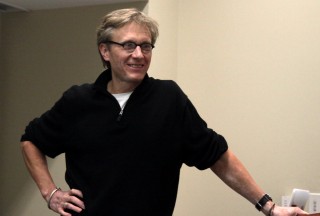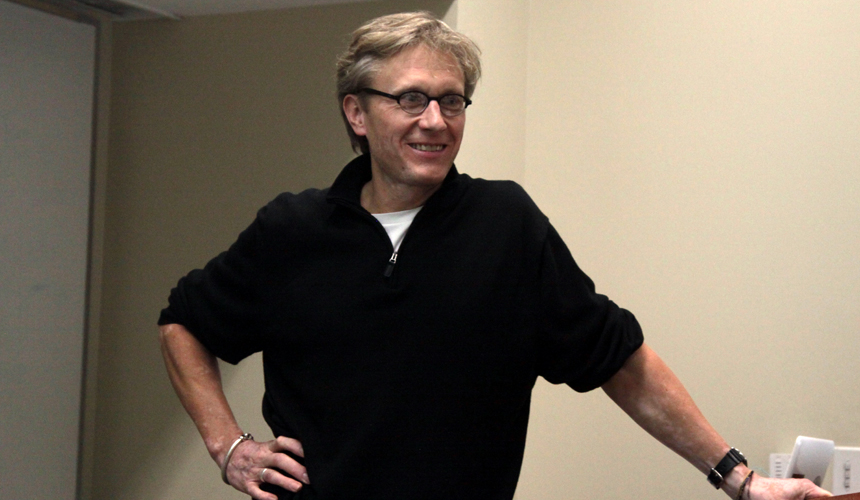
Ambika Kashi Singh | Lariat Photographer
By Robyn Sanders
Reporter
Dr. Ronald Amundson of the University of California at Berkeley discussed how human activities are impacting soil in a lecture titled “The Fate of Soils and Landscapes in the 21st Century” Thursday afternoon in the Baylor Sciences Building.
Amundsen is a professor of pedology (the study of soil) and chair of the division of ecosystem sciences at the University of California at Berkeley.
Dr. Lee Nordt, professor of geology at Baylor and dean of the college of arts and sciences, introduced Amundson and some of his research interests.
“Here [are] some of his research interests: impact of climate and life on earth processes, the physical and chemical imprint of life on landscapes, biotic effects of geological processes, effect of climate on earth’s nitrogen and sulfur cycles and soils on Mars,” Nordt said. “That is some pretty heavy stuff there for a pedologist, it seems to me.”
Amundson said his interest in how humans impact the landscape stems from growing up on a farm in South Dakota.
“I realized that I lived in a landscape that really bore no resemblance to the natural area that was there before the settlers came,” Amundson said. “It was hard to really fathom how much humans had changed the landscape that I grew up in.”
Amundson introduced the term ‘environmental amnesia’ to the audience, defining it as the effect the slowly changing environment has on our grasp of the magnitude of climate change.
“This is one of the problems with climate change- it happens slowly. It doesn’t all happen at once, so it’s hard to convince people of the importance of the magnitude of the process.”
Amundson equated the earth’s soil to the flesh and skin of the earth.
“Soils are not inert things, and they’re essentially living historical bodies on the earth’s surface that take tens or hundreds of thousands of years to form,” Amundson said. “And so there’s this incredible diversity of soil types that are naturally scattered across the planet. They’re products of long periods of earth’s history.”
Amundson said it would take thousands of years to recreate soils, and because of unique combinations of climate and biotic factors, a whole new set of soils would form unlike soils that existed in the past. Amundson also said the planet is currently using the earth’s soil at an unsustainable rate, which means the earth’s soil mantle is in danger of disappearing.
Amundson said he and his colleagues have mapped soil distributions across the country to see which areas had the most endangered soils.
“Iowa, along with Indiana were the two states that had the highest percentage of rare soils in an endangered state,” Amundson said. “Basically, more than 80 percent of their rare soils were severely impacted.”
Amundson ended his lecture with a discussion of reasons why caring about natural landscapes and natural soils might be important. Some of the reasons he listed included soil’s scientific and educational value, the aesthetic value of soil, and ethical reasons, such as the ‘ecological golden rule.’
“The late biologist from Harvard, Stephen Jay Gould, used to say we should follow the ‘ecological golden rule,’ [in] which we should treat the planet like we want to be treated,” Amundson said. “It’s to our benefit to treat the planet well.”
Amundson will present the second part of this week’s geology colloquium from 3 to 4 p.m. Friday afternoon in BSB E231 with a lecture titled, “Geomorphologic Evidence for the Late Pliocene Onset of Hyperaridity in the Atacama Desert.”






